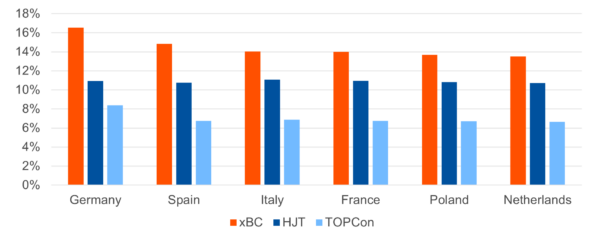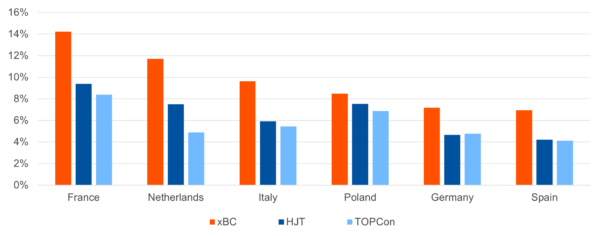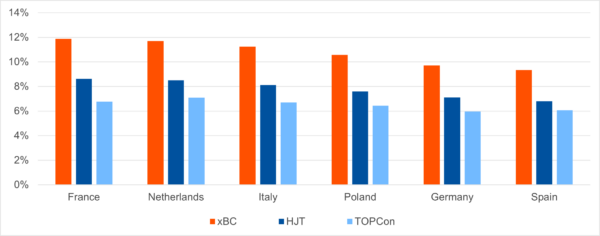- A new white paper from research and consulting firm Exawatt examines and contrasts key module parameters across various technologies to assess the potential value these technologies may offer for residential and commercial applications.
- The white paper, authored by Molly Morgan and Alex Barrows of Exawatt, draws on analyses from the company’s Solar Technology and Cost Service.
The paper reveals that, in the modelling performed, back contact (xBC), heterojunction (HJT), and tunnel oxide passivated contact (TOPCon) technologies may exhibit meaningful improvements in lifetime energy generation compared to mono passivated emitter rear contact (PERC) technologies. Through detailed modelling exercises, the document evaluates how xBC, HJT, and TOPCon contribute to increased clean energy generation and potential financial savings depending on specific system parameters.
In both residential and commercial system modelling scenarios, the authors found that xBC stands out as the top performer, showing an average increase of 16.0% over mono PERC, while HJT and TOPCon offer generation gains of 11.4% and 8.2%, respectively.

Furthermore, the white paper delves into the profitability of residential and commercial installations through assessments of payback time and levelized cost of electricity (LCOE). Despite their premium pricing, xBC, HJT, and TOPCon technologies demonstrate enhanced profitability in both modelling scenarios in comparison to the previously mainstream mono PERC. Among these technologies, xBC emerges as the frontrunner, boasting an average 9.7% shorter payback time and 10.7% lower LCOE across all modelled locations.


While small cost reductions may still be achieved in the current PV industry, the white paperoutlines that these are relatively minor in comparison to the potential efficiency gains offered by advanced technologies. High module efficiency is key to driving down system cost-per-watt, payback time, and LCOE, since it can drive down the per-watt costs of many key non-module costs such as labor and mounting.
The white paper underscores the importance for distributors, installers, and system owners to grasp the value proposition of high-performance technologies for informed decision-making on which technology has the greatest value for a specific application.
The authors conclude that as the industry continues to prioritize performance improvements over cost reductions, embracing high-performance PV technologies can pave the way for enhanced efficiency, cost savings, and sustainable energy solutions.
Source: Exawatt
This article was originally published in pv magazine and is republished with permission.













